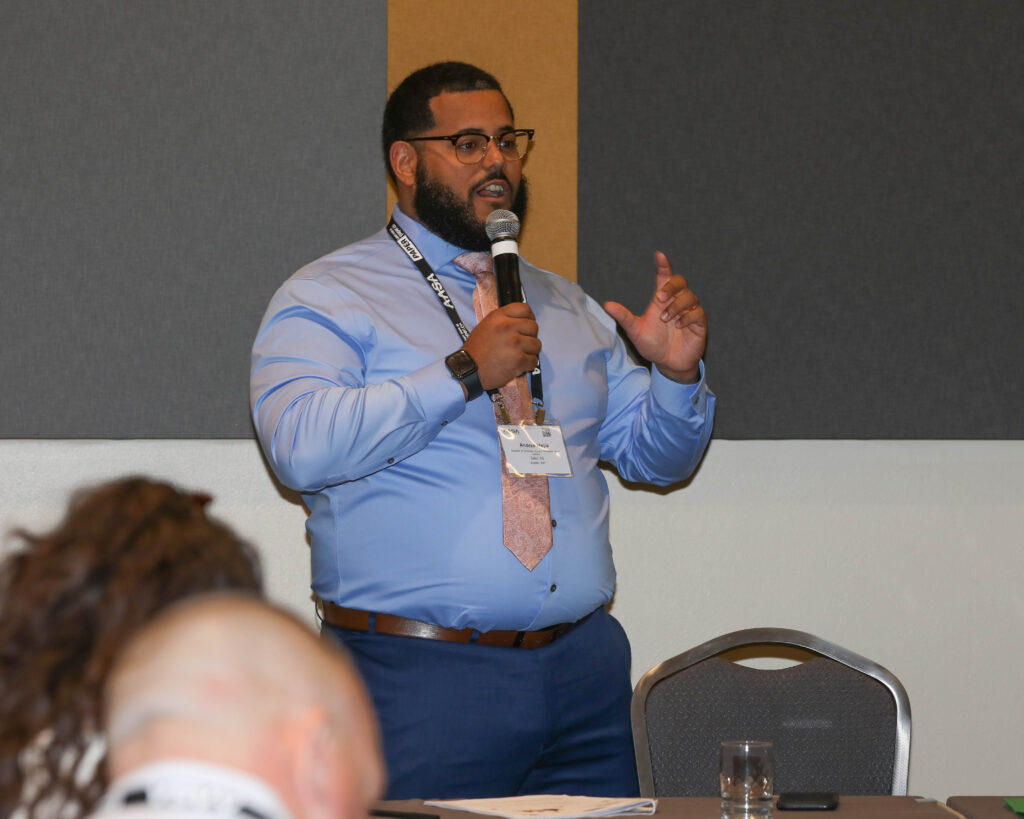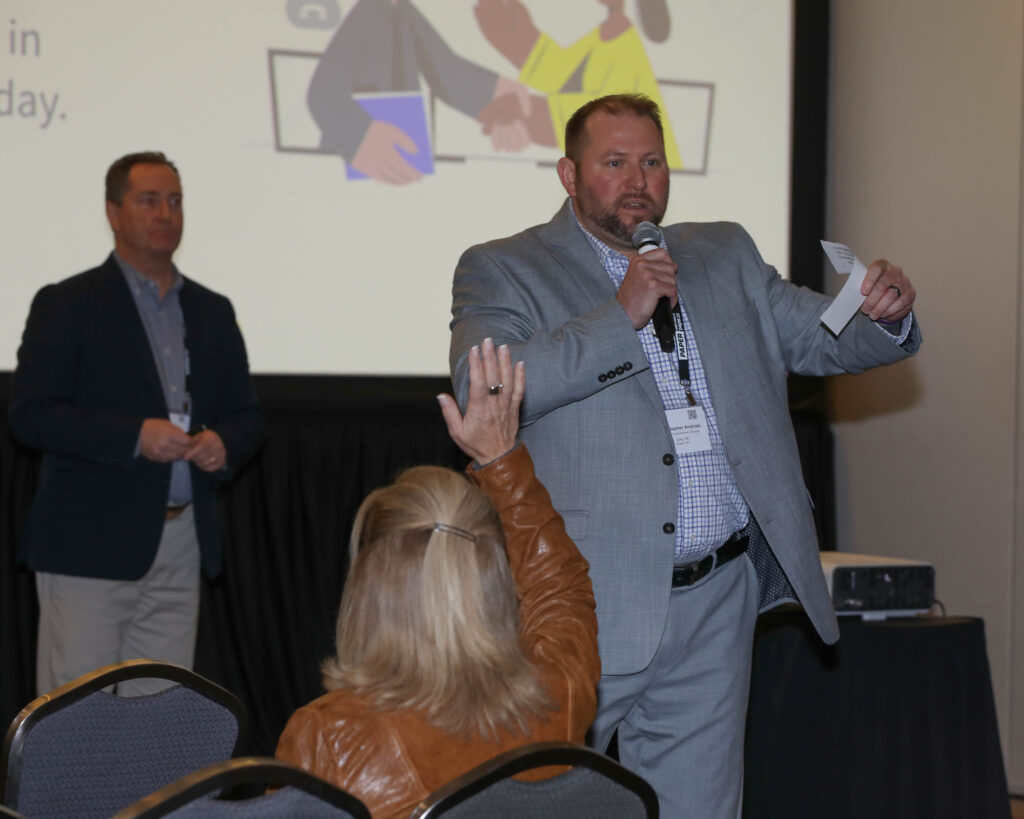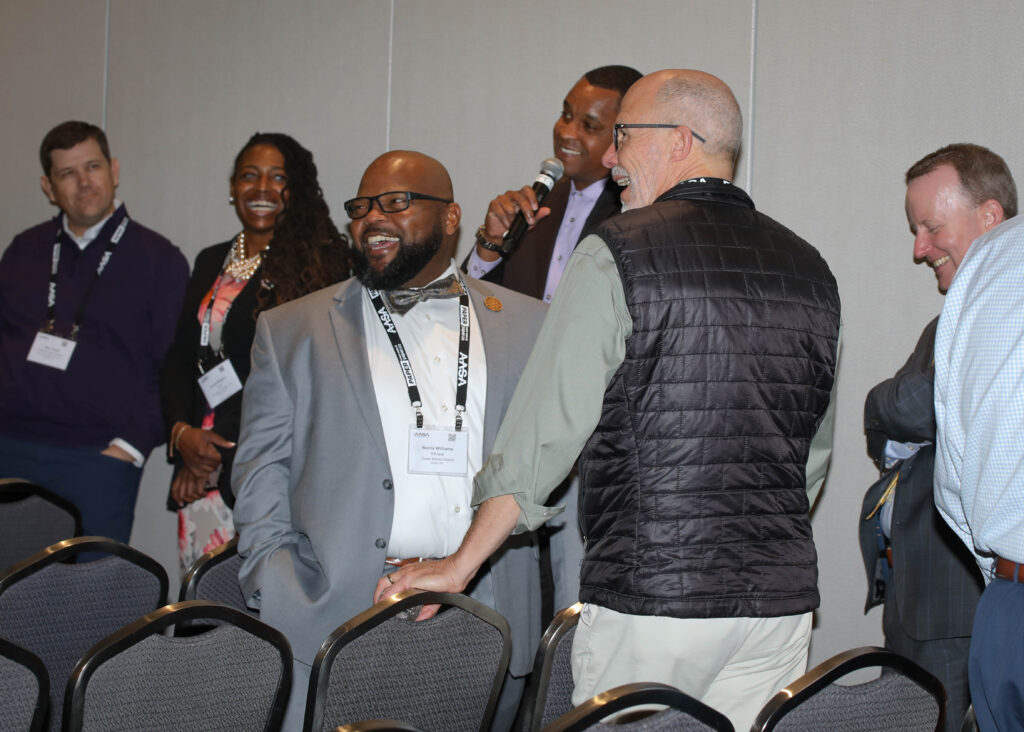The AASA conference panel “Introducing, implementing and sustaining DEI in Predominately White School Communities” on Friday afternoon offered advice on how to include more attention to diversity, equity and inclusion in school districts, even in places where there is some opposition to the work.
The session was led by three employees of New Hampshire’s School Administrative Unit 16, David Ryan, superintendent of schools; Christopher Andriski, assistant superintendent; and Andres Mejia, director of diversity, equity, inclusion and social justice.
Ryan explained the reasons this work began, organized by parents, in his district, and why it is important.

“The first [reason], is because it’s the right work to do, right? All of you understand it's the right work to do. The second is that, if we want to build a caring culture … [one] where we really truly believe that everyone belongs, and it's for all kids, then that has to transcend everything that happens in the school, in terms of the world,” Ryan said.
“But it really is more about having our students recognize that they don't live in the world, in our little part of the state,” he added. “And when they leave us and they go into the world, we want them to be contributing citizens and members of the world. And that means we want them to be able to work alongside and support people who don't look like them, sound like them, dress like them, believe in things like them, practice faith like them.”
This DEIJ work, however, can bring about some unrest in the community, from parents unwilling to contribute to the funding to anger about a “political agenda” being implemented. All three panelists had faced their own issues with this, and therefore had plenty of advice on the subject.
Mejia said you start by making sure everyone feels heard. The unwillingness to work together primarily comes from a place of misunderstanding and fear, so making sure that members of the community feel their voices are heard is the best way to find out where the opposition is coming from. To do this, Mejia started a program in SAU 16 called Community Conversations, a safe space where everyone is welcome to gather, share and learn more about DEIJ.

“[We started] listening to what people needed, what misunderstandings people had, and we brought in Community Conversations to the district. … [They] were open to students, parents, caregivers and the educators of our schools,” Meija explained. “One topic was DEIJ and what it looks like in our schools. Another one was equity and belonging and what that looks like. … [We were] putting definitions of equity on the wall, a bunch of different ones and letting parents and students walk around and look at the definitions and give their own definition of equity so that we can come to a common understanding,” Mejia said.
Watch an in-depth interview with the presenters.
(Angelina D’Elia is a reporting intern with AASA’s Conference Daily Online and a sophomore at Trinity University in San Antonio, Texas.)

